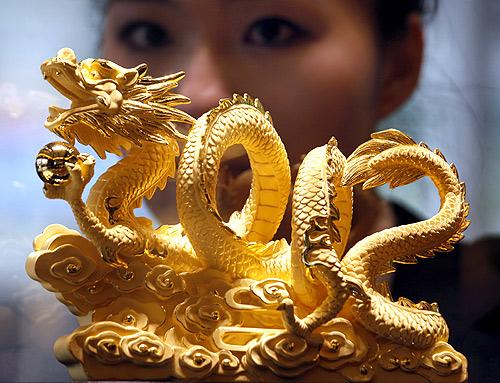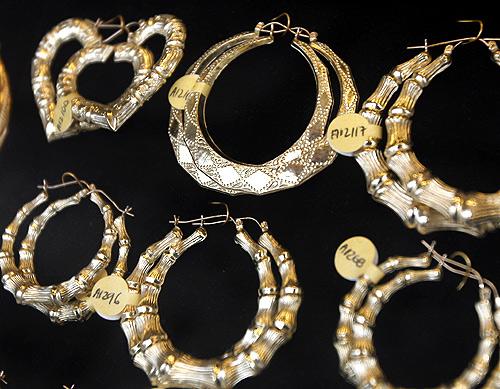
The steep rise and fall in gold prices in the recent past is quite dramatic, and reminiscent of the 1970s, which was also characterised by sustained economic uncertainty, a steep rise in the dollar price of oil and high inflation.
The big difference between the seventies and the recent past is that while inflation is currently subdued, huge liquidity injections by central banks have fuelled speculative fears regarding inflation going forward.
The gold bubble of the seventies was pricked by the return of macroeconomic stability and growth, and decline in the dollar price of oil.
. . .

The question, therefore, is whether the sharp fall in gold and oil prices is the harbinger of good times ahead and a return to normalcy for the global economy.
Seen thus, the sharp fall in gold prices is surprising because three fundamentals underlying aurum's recent bull run remain unchanged.
First, sustained economic uncertainty had created generalised risk aversion and flight to risk-free assets.
Gold, along with other hard currency treasury bonds, is perceived as a risk-free asset.
Second, vast liquidity creation by central banks fuelled an asset boom despite a failing global economy on the one hand, and inflationary fears going forward on the other.
Gold is both an asset and a traditional inflation hedge.
. . .

Third, rising gold prices attracted hedge funds seeking higher returns in an environment characterised by low yields in the risk-free segment, driving prices still higher.
These fundamentals have in no way changed, indeed, if anything they have been magnified over the recent past.
First, the April edition of the International Monetary Fund's World Economic Outlook is not at all upbeat about the prospects of a global recovery, having further downgraded its previous forward-looking growth forecasts.
Second, the Federal Reserve's massive monthly quantitative easing (treasury bond purchases) of $85 billion of treasury is now matched by Bank of Japan's monthly programme of $75 billion.
. . .

Third, while the deposit banking system is now better regulated than it was at the time of the housing bubble, including through the new Basel III capital provisioning and definition norms, the unregulated shadow banking system may actually be a beneficiary of this regulatory tightening.
So what could have happened to have taken the zing out of the gold market in such a dramatic manner, with prices falling by about a quarter in a matter of days?
The gold market is not transparent, with an air of cloak and dagger about it.
Unsurprisingly, a number of competing theories, including conspiratorial ones, are doing the rounds, involving major institutional players, namely central banks, bullion banks and hedge funds.
. . .

Some argue, for instance, that the price drop is mostly on paper, since it is still difficult to procure gold in physical form without a premium on the market price.
Distressed Cyprus is rumoured to be contemplating selling its gold reserves, to be followed shortly by other peripheral debt-stressed countries.
Central banks hold large gold reserve assets.
Unlike their treasury assets, these do not yield any return.
Central banks are, therefore, known to lease indeterminate volumes of these risk- free assets to bullion banks at around one per cent annual interest.
Bullion banks, in turn, sell the gold in the London Bullion Market to invest in higher yielding, but risk-free, long-term treasury bonds.
. . .

This is, however, not risk-free arbitrage since bullion banks need to buy gold back at the end of the period to return to central banks.
If the price of gold appreciates sharply in the interim, they can book huge losses.
It is, therefore, in the interest of bullion banks to keep gold prices low.
However, over the short-run, any lumpiness in the amount of gold to be returned to central banks could drive up prices in the short term; alternatively, there is an incentive for bullion banks, and associated hedge funds (since the division is not water-tight) in these circumstances to try and drive down gold prices when large volumes are to be returned to central banks.
. . .

Alan Greenspan, erstwhile chairman of the US Federal Reserve, famously quipped in 1998 that central banks have a nobler objective in leasing gold, namely keeping gold prices down.
Why the objective of central banks should coincide with those of bullion banks might appear strange at first sight, but there is a deeper macroeconomic objective.
Since gold competes with treasury bonds as a reserve asset, low gold prices would, ceteris paribus, drive treasury bond yields lower.
Seen thus, leasing gold by central banks becomes a monetary policy tool.
Since central banks are currently pulling all levers -- quantitative easing, credit easing, 'twisting' the yielding curve, etcetera -- it is entirely possible that some big, innovative central bank is driving down gold prices to keep treasury yields low without having to buy them.
. . .

The third major player in the gold saga is hedge funds, which include gold exchange-traded funds.
Since gold is perceived as a risk-free asset, a large-scale shift of savings and investment from risk assets into gold is to be expected during a financial crisis.
This should drive prices up.
Any drop in prices would be absorbed by investors, but there should not be any need for fire sales arising from asset liability mismatches that are characteristic of a classic bubble prick.
So, were large amounts of leveraged funds also going into gold hedge funds, despite wrecked balance sheets, private deleveraging and tighter financial regulatory norms following the global financial crisis?
If so, even a modest falling trend in prices could have pricked the boom, leading to fire sales, just as what occurred during the recent housing and financial crisis, as short-term debt could not be rolled over.
. . .

This line of reasoning is not out of the realm of the possible because shadow banking has still to be reined in.
Actions by central banks, bullion banks and leveraged hedge funds, singly or severally in varying proportions, rather any return to normalcy, are possible reasons for the recent sharp decline in gold prices.
The more interesting issue, however, is whether this drop is a short-term correction, or the end of a dream bull run.
This ultimately depends on the relative predominance of the three fundamentals described above that drove gold prices up in the first place.
If, the first two factors are more important, gold prices will rebound soon, as the real demand for the metal is actually going up, with the market having virtually declared it as the hardest of hard currencies.
And if prices rise again, it would not be long before hedge funds join the dance party once more.
The writer is a civil servant. These views are personal